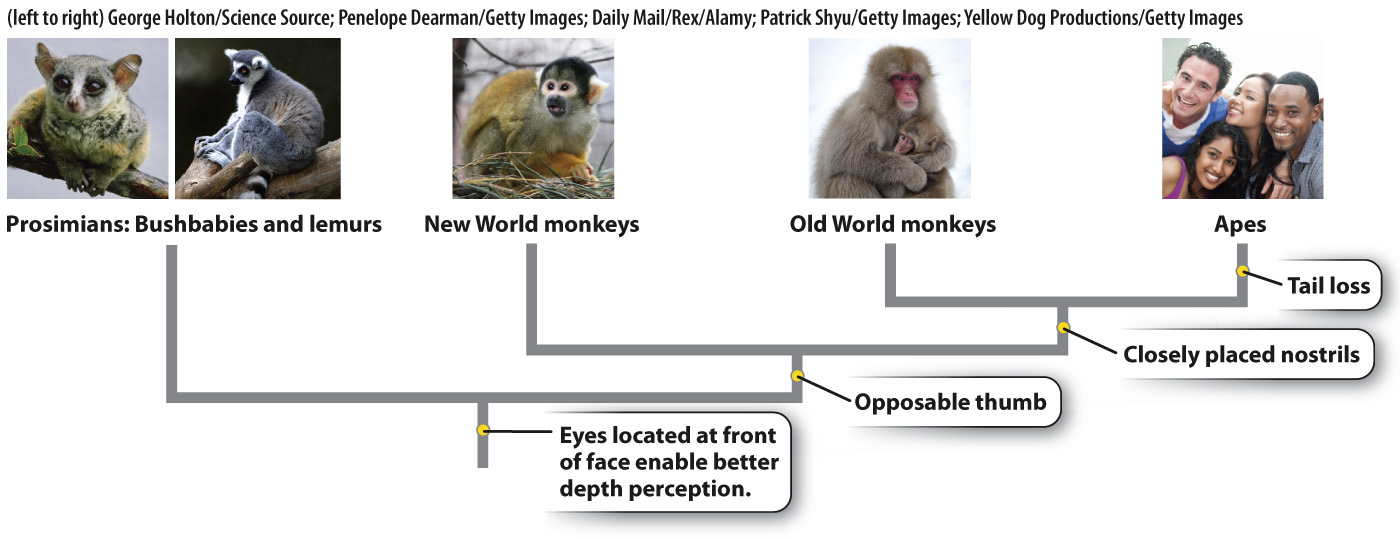Comparative anatomy shows that the human lineage branches off the great apes tree.
There are about 400 species of primates, which include prosimians (lemurs, bushbabies), monkeys, and apes (Fig. 24.1). All primates share a number of general features that distinguish them from other mammals: nails rather than claws together with a versatile thumb allow objects to be manipulated more dexterously, and eyes on the front of the face instead of the side allow stereoscopic (three-

Prosimians are thought to represent a separate primate group from the one that gave rise to humans. Lemurs, which today are confined to the island of Madagascar, are thus only distantly related to humans. Monkeys underwent independent bouts of evolutionary change in the Americas and in Africa and Eurasia, so the family tree is split along geographic lines into New World and Old World monkeys. Though both groups have evolved similar habits, there are basic distinctions. There are differences between the teeth of the two groups, and in New World monkeys the nostrils tend to be widely spaced, whereas in Old World species they are closer together.
One line of Old World monkeys gave rise to the apes, which lack a tail and show more sophisticated behaviors than other monkeys. The apes are split into two groups, the lesser and the great apes (Fig. 24.2). Lesser apes include the fourteen species of gibbon, all of which are found in Southeast Asia. The great apes include orangutans, gorillas, chimpanzees, and humans. Taxonomists classify all the descendants of a specified common ancestor as belonging to a monophyletic group (Chapter 23). Thus, humans, blue whales, and hedgehogs are all mammals because all three are descended from the first mammal, the original common ancestor of all mammals. Because human ancestry can be traced to the common ancestor of orangutans, gorillas, and chimpanzees, humans, too, are a member of the monophyletic great ape group.
